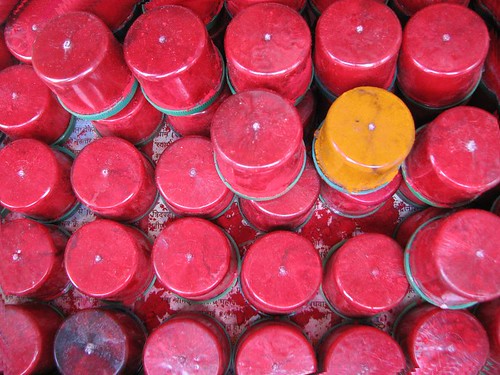
Canon Powershot S3IS
Badrinath
SINDOOR
Sindoor is a red powder (Vermilion), which is traditionally applied at the beginning or completely along the parting-line of a woman’s hair (also called mang) or as a dot on the forehead. Sindoor is the mark of a married woman in Hinduism. Single women wear the dot in different colors ("bindi" in Hindi) but do not apply sindoor in their mang.
In Hindu culture, the tradition of wearing Sindoor or vermillion is said to have been prevailing through more than 5,000 years. Female figurines excavated at Mehrgarh, Baluchistan, show that sindoor was applied to the partition of women's hair even in early Harappan times.
SANDALWOOD
Sandalwood paste is integral to rituals and ceremonies, to mark religious utensils and to decorate the icons of the deities. It is also distributed thereafter to devotees, who apply it to the forehead or the neck and chest. Preparation of the paste is considered a duty fit only for the pure, and is therefore entrusted in temples and during ceremonies only to priests.
The paste is prepared by grinding pieces of the wood by hand upon granite slabs shaped for the purpose. With slow addition of water a thick paste results, which is mixed with saffron or other such pigments to make Chandan.
Sandalwood is considered in alternative medicine to bring one closer to the divine. Sandalwood essential oil, which is very expensive in its pure form, is used primarily for Ayurvedic purposes and treating anxiety.
(info taken from Wiki)
______/|\_______






1 comment:
This shot some where reminds of my city market where we see these kind of scenes often !!This is beautiful.Very nicely captured.I must say you have a beautiful blog here and i would be back for sure.
Post a Comment